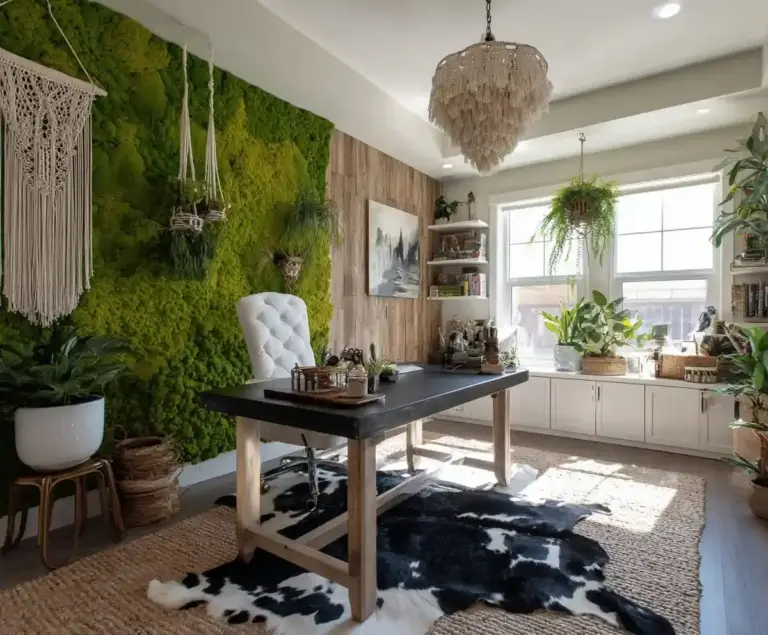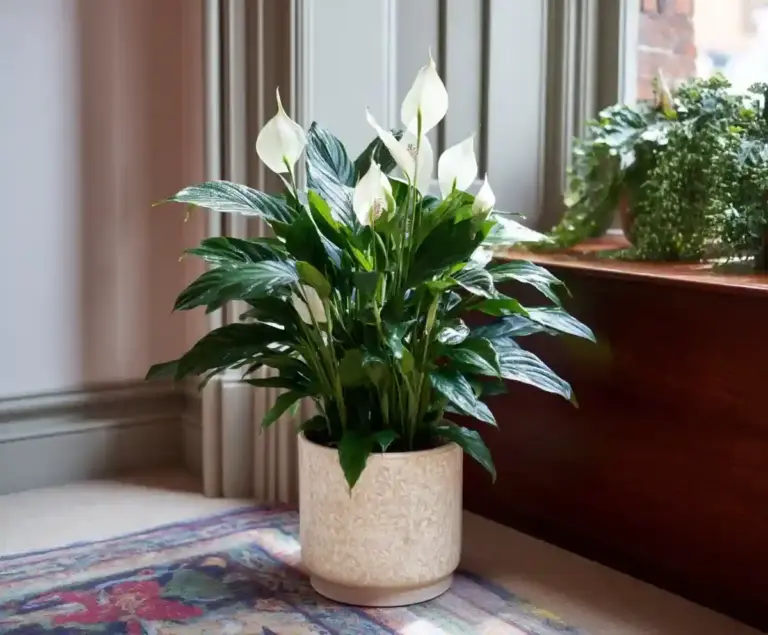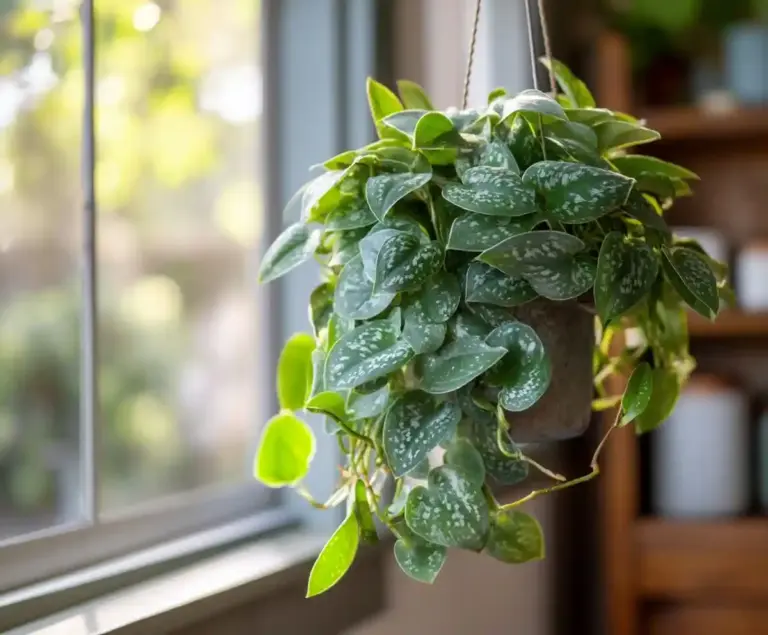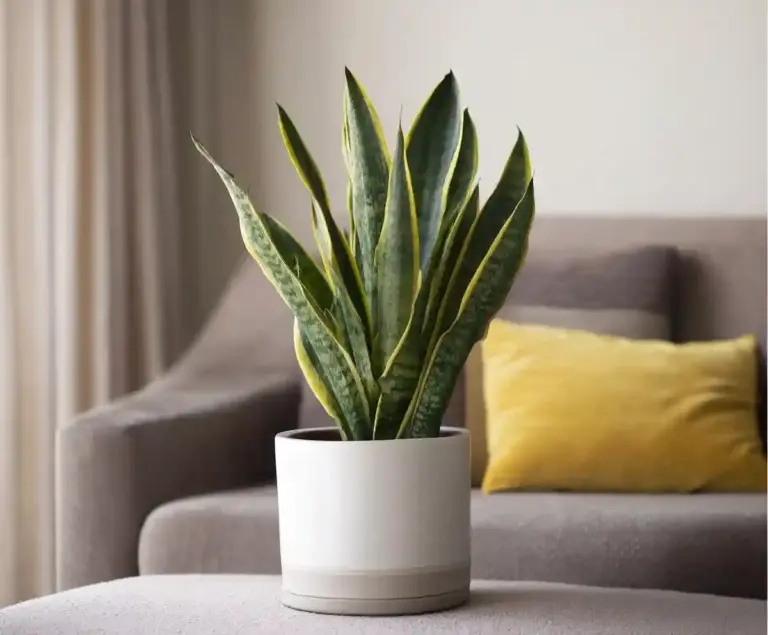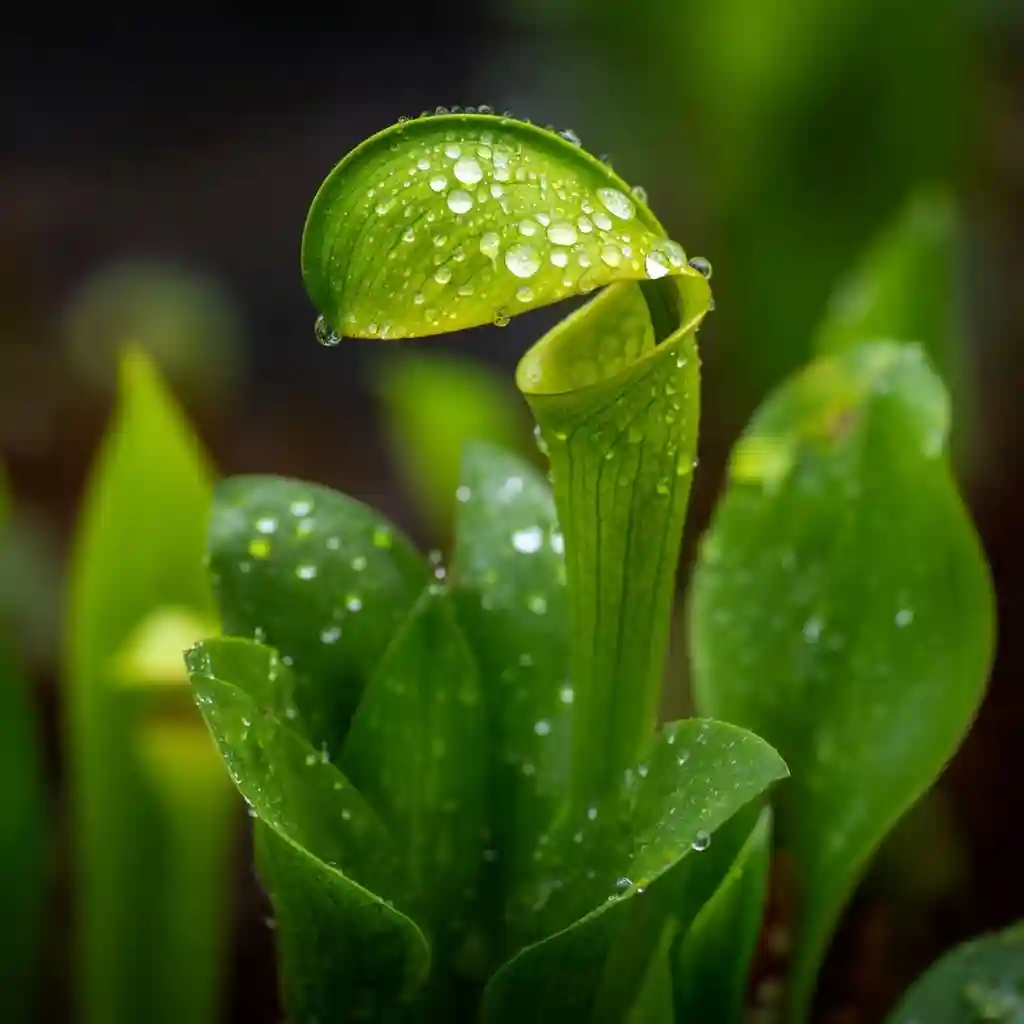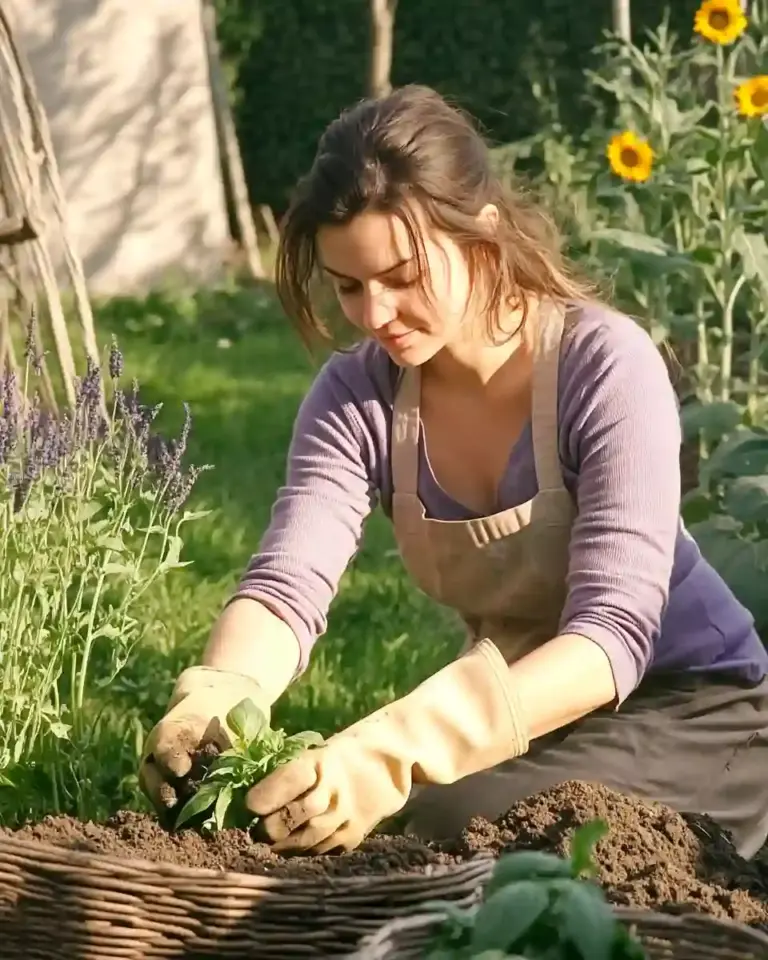Some of the world’s prettiest plants also happen to be the most unusual. Carnivorous plants may have a reputation for being creepy or strange, but look a little closer and you’ll see incredible natural beauty hidden behind their insect-hunting habits. With vibrant colors, exotic shapes, and delicate flowers, many of these bug-eating plants are as decorative as they are deadly—to pests, at least.
While they evolved to trap and digest insects due to nutrient-poor soil, these pretty plants have become beloved by collectors and adventurous gardeners for their sculptural looks and alien charm. Here are 14 stunning carnivorous plants that prove pretty can also be powerful.
Table of Contents
1. Cobra Lily
If you’re looking for pretty plants with a dramatic flair, the Cobra Lily (Darlingtonia californica) absolutely stands out. Native to the cool, boggy regions of Northern California and southern Oregon, this carnivorous plant gets its name from its pitcher shape, which resembles a cobra with a raised hood and forked tongue.
The coloration alone is captivating—green pitchers with translucent patches and veined patterns that give the illusion of eyes. These stunning features aren’t just for show; they help confuse and trap insects inside the plant’s tubular leaves.
While beautiful, Cobra Lilies are extremely picky about their growing conditions. They need cool, oxygen-rich water, acidic soil, and full sun to part shade. This makes them more suitable for experienced growers or those with outdoor bog gardens in cooler climates.
2. Purple Pitcher Plant

The Purple Pitcher Plant (Sarracenia purpurea) is a standout among pretty plants, especially in northern climates. With deep red flowers and wide, greenish-purple pitchers streaked with veins, this carnivorous beauty looks as much like a wildflower as a predator.
What makes it unique is its short, squat shape compared to other Sarracenia species. The pitchers form a rosette at ground level, creating a pool of rainwater inside to trap and digest insects. It’s a passive but highly effective hunting strategy.
Native to the eastern United States and Canada, this hardy plant can survive in USDA zones 3 to 6, making it one of the few cold-tolerant carnivorous species. It prefers boggy, acidic soil and full sunlight, which enhances its vivid color. Though it’s more of a specialty garden addition than a houseplant, its rich hues and otherworldly shape make it well worth the effort.
3. Yellow Pitcher Plant

Few carnivorous plants are as bright and striking as the Yellow Pitcher Plant (Sarracenia flava). With its tall, lime-green pitchers and flared tops, it’s an eye-catching plant that adds bold vertical interest to any bog garden or collection. The tubular leaves can grow up to 3 feet tall, making it one of the tallest pitcher plants native to North America.
Its bright yellow flowers bloom in early spring, often before the pitchers are fully developed. While beautiful, the plant’s real showstopper is the elegant curve and symmetry of the pitchers themselves—designed to lure in and trap unsuspecting insects.
This sun-loving species thrives in acidic, boggy soil and needs plenty of direct sunlight to maintain its vivid coloration. Native to the Southeastern U.S., it prefers warm, humid conditions but can be grown outdoors in zones 6 to 8. As far as pretty plants with a lethal twist go, this one’s both graceful and functional.
4. White Trumpet Pitcher Plant

If there’s a supermodel of the carnivorous plant world, the White Trumpet Pitcher Plant (Sarracenia leucophylla) would wear the crown. With its tall, fluted pitchers adorned in bright white tops etched with bold maroon veins, this plant is a true botanical work of art.
Unlike other pitcher plants that tend toward green or brown hues, this species dazzles with its contrasting patterns and architectural form. The white coloration not only adds ornamental appeal but also helps reflect light, drawing insects deeper into the pitcher.
Native to the southeastern United States, this plant thrives in humid, boggy soil and full sun. It’s hardy in zones 7 to 9 and is one of the more grower-friendly options in the Sarracenia family. While still needing specific conditions, it’s a favorite among collectors for both beauty and ease of care.
For gardeners seeking pretty plants that double as bug trappers, this one checks all the boxes—elegant, exotic, and efficient.
5. Tropical Pitcher Plant
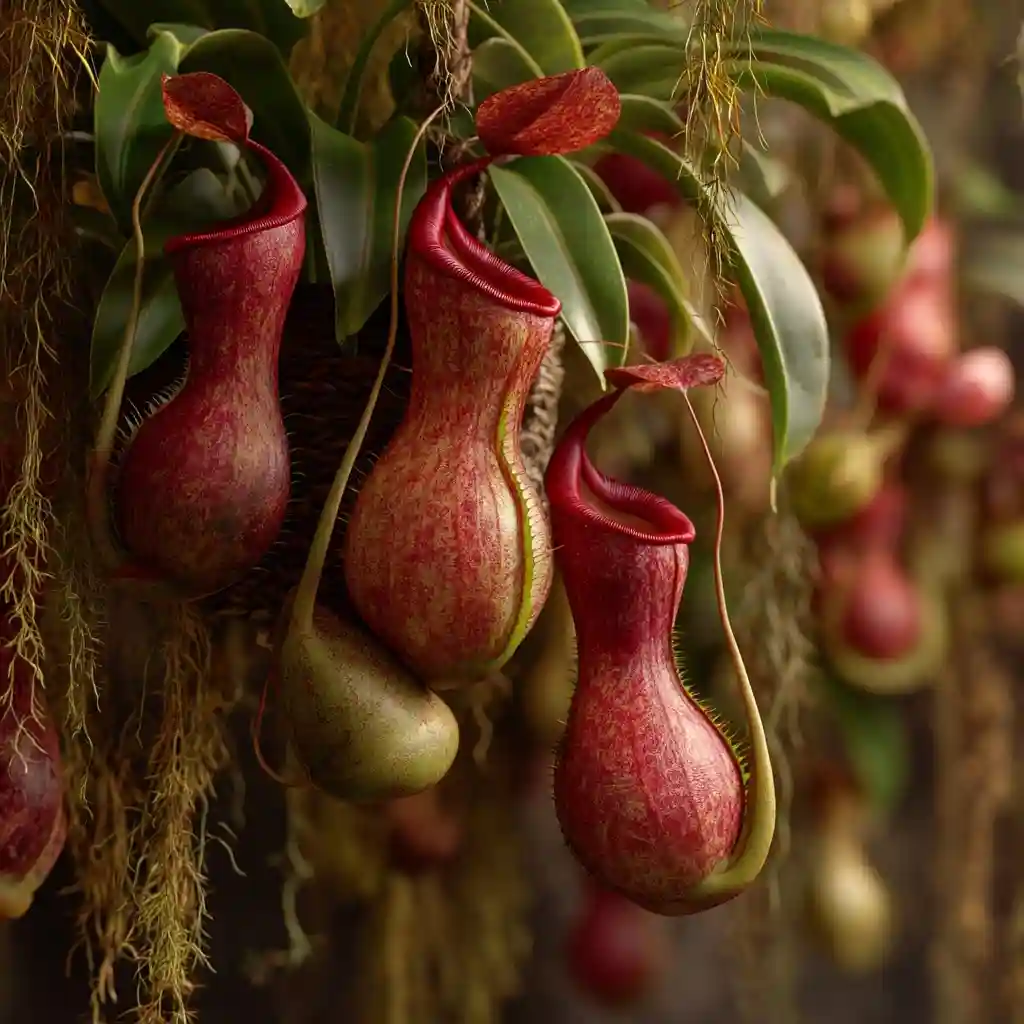
The Tropical Pitcher Plant (Nepenthes spp.) is the ultimate showpiece for those who love their plants with a touch of the extraordinary. These vining carnivorous plants are known for their hanging, jug-shaped pitchers that come in a dazzling range of colors—deep red, speckled purple, bright green, even striped varieties.
Unlike their North American cousins, Nepenthes species are native to tropical regions of Southeast Asia and require warm temperatures, high humidity, and filtered light. Their pitchers can reach over a foot in length in some species—large enough to trap not just insects but occasionally frogs or small mammals.
Because of their trailing growth, they’re often grown in hanging baskets, making them an excellent ornamental option for greenhouses, terrariums, or warm indoor spaces. The pitchers themselves dangle like ornaments, creating a surreal jungle-like effect.
If you’re searching for pretty plants that look like they belong in a fantasy world, this one easily makes the list.
6. Sun Pitcher Plant
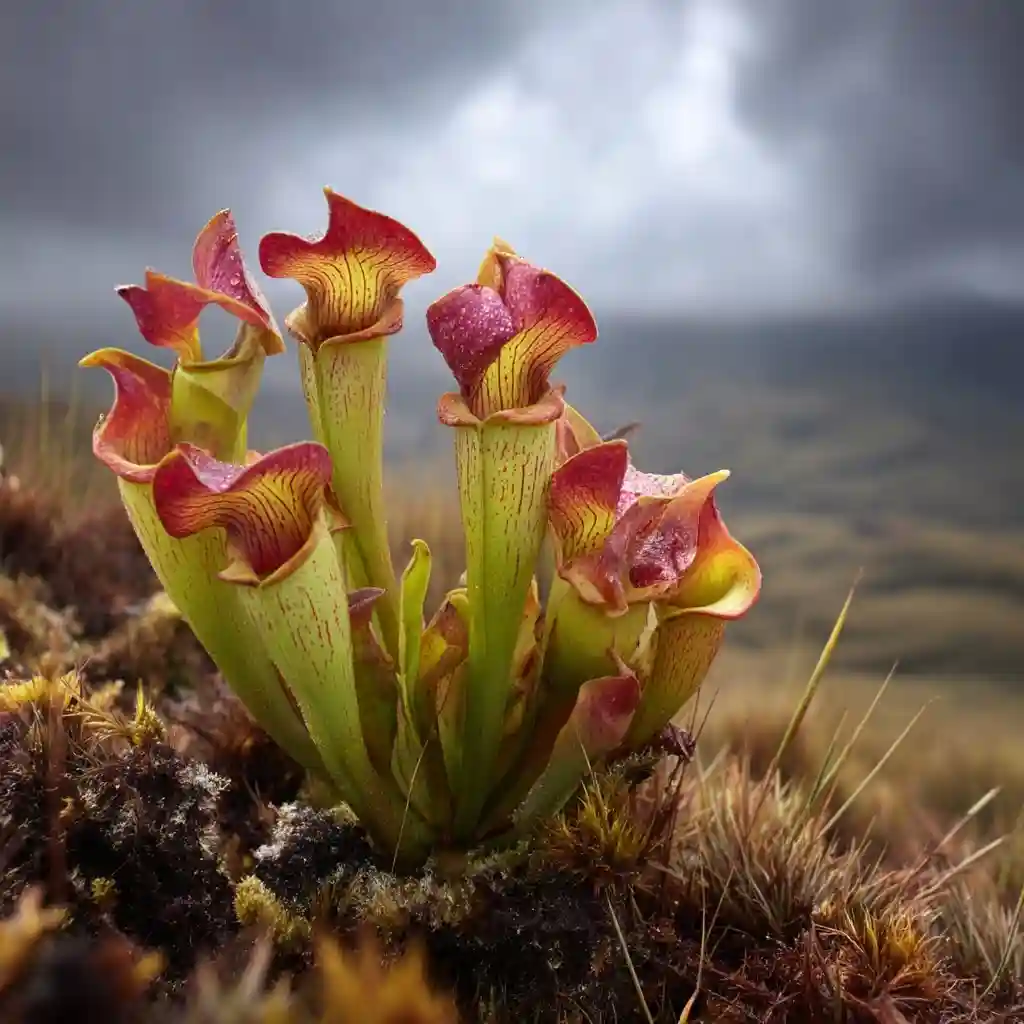
The Sun Pitcher Plant (Heliamphora spp.) is a lesser-known but incredibly striking carnivorous plant that thrives in the highlands of South America, particularly in Venezuela and surrounding regions. Its upright, tubular pitchers often sport red, pink, or coppery tones, glowing beautifully under bright sunlight—hence the name “sun pitcher.”
These plants have a more delicate appearance compared to their tropical cousins, with narrow, vase-like pitchers that form clumps and slowly expand over time. They trap insects by allowing rainwater to fill the pitchers, creating a watery grave for any bug that slips inside.
Growing sun pitcher plants at home is a challenge—they demand cool temperatures, constant humidity, and intense light. But for dedicated plant lovers or terrarium enthusiasts, they reward your effort with stunning coloration and a refined, elegant structure.
Among carnivorous species, this is one of the more understated yet undeniably pretty plants you’ll ever see.
7. Western Australian Pitcher Plant
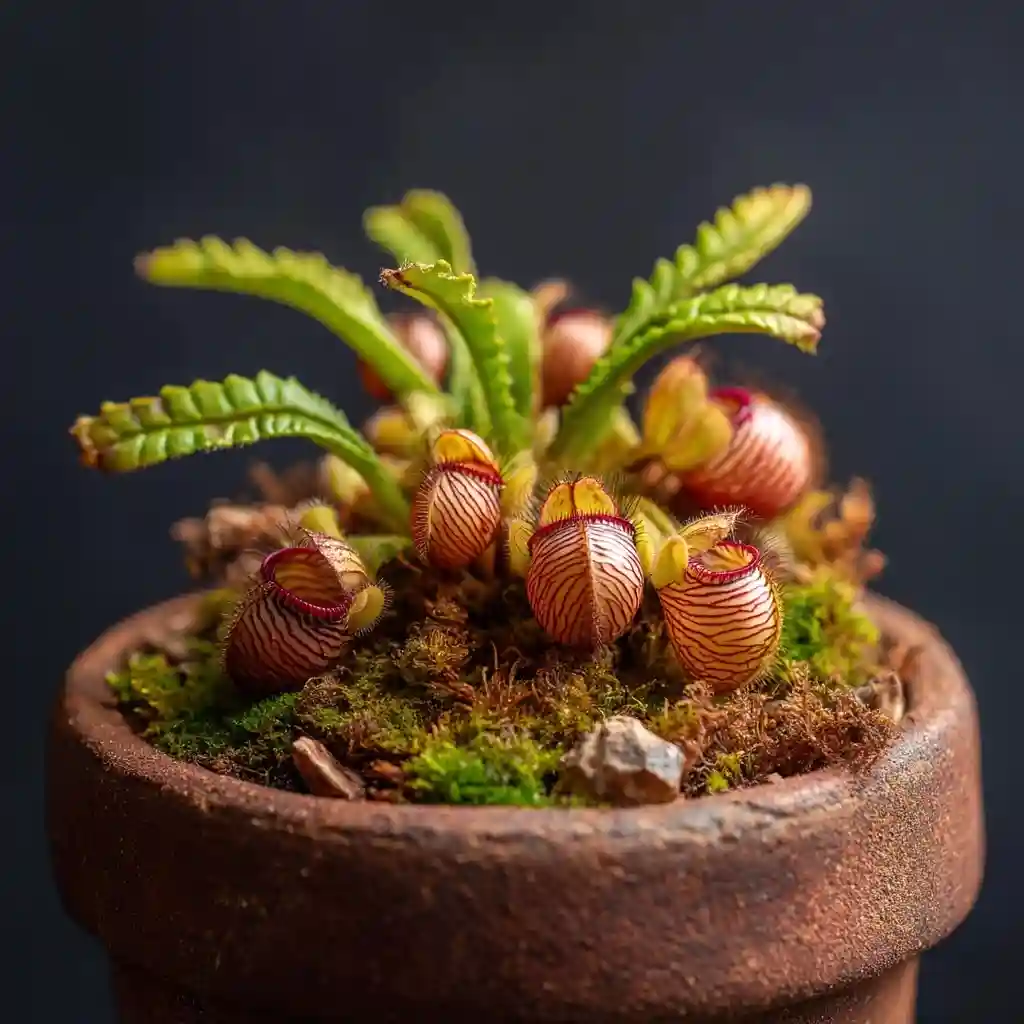
The Western Australian Pitcher Plant (Cephalotus follicularis) proves that beauty can come in small, compact packages. Native to a narrow region of southwestern Australia, this plant forms a tidy rosette of tiny, striped pitchers that look like miniature teacups with toothed lids.
Despite its small size—most pitchers measure just over an inch long—it packs a punch in both design and color. Some cultivars, like the rare ‘Eden Black,’ develop such deep purple coloring that they appear almost black, a rarity in the plant world and a visual treasure for collectors.
It thrives in sphagnum moss, with cool temperatures and filtered light. Though it’s not the easiest to grow, it’s more manageable than many tropical species, making it a popular choice for indoor growers who want a pretty plant with unique character.
Don’t let its size fool you—this little carnivore is just as capable of catching bugs as its larger cousins, and arguably, much cuter while doing it.
8. Sundew

The Sundew (Drosera spp.) might just be nature’s glitter trap. With leaves covered in glistening, sticky hairs, this carnivorous plant looks like it’s been dusted with dew—hence the name. But don’t be fooled by its beauty—those sparkling droplets are actually mucilage, a sticky substance used to trap and digest insects.
There are over 190 species of sundews, and they grow all over the world, from temperate bogs to tropical forests. Some form low rosettes, while others grow upright or vine-like. Their colors range from rosy reds to bright greens, with flowers that vary by species and add to their ornamental charm.
What makes sundews especially attractive among pretty plants is their movement—once an insect lands, the tentacle-like hairs slowly curl inward to secure the prey. It’s both eerie and elegant.
Best grown in peat-based, nutrient-poor soil, sundews thrive in bright light and high humidity. Many species are surprisingly easy to grow indoors, making them a favorite for beginners who want a dramatic yet manageable carnivorous plant.
9. Venus Flytrap
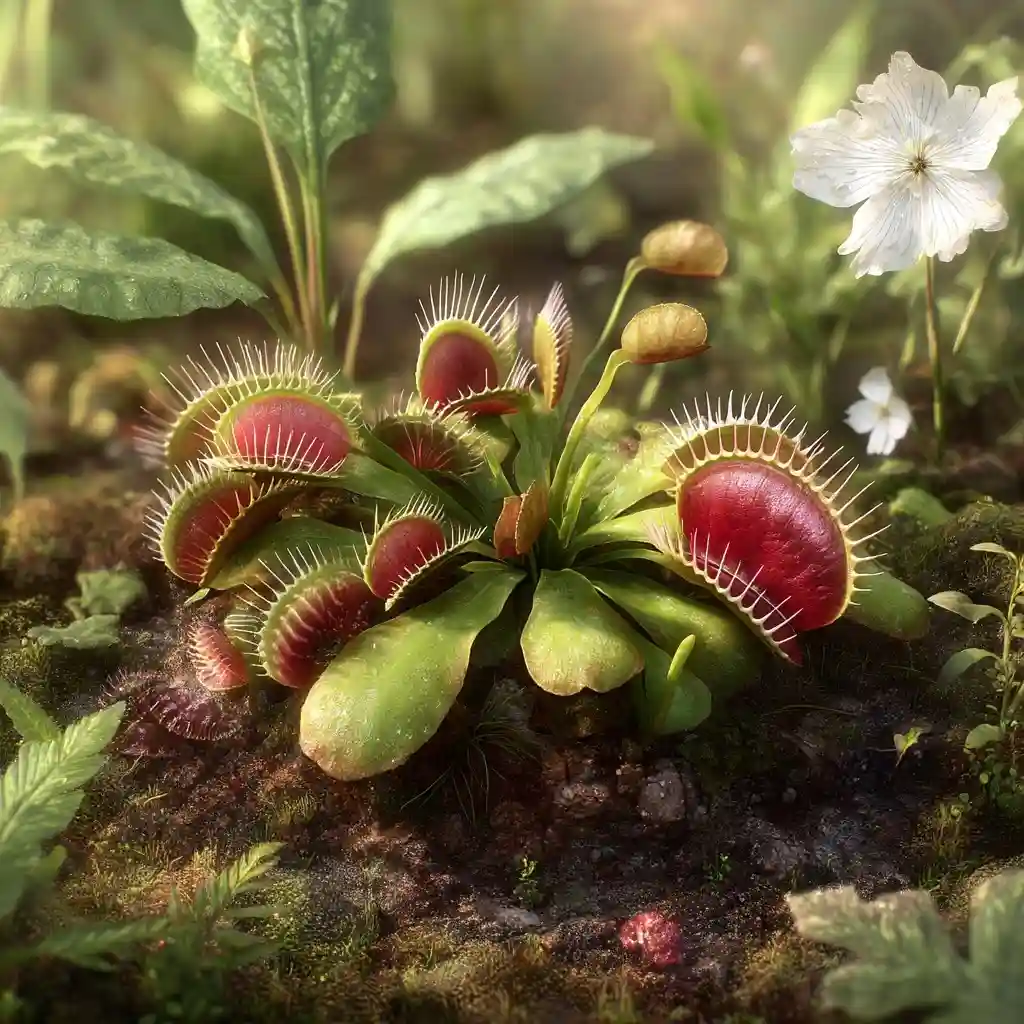
The Venus Flytrap (Dionaea muscipula) is the poster child of carnivorous plants—and for good reason. With its spiky, jaw-like traps and lightning-fast reflexes, this plant doesn’t just sit around waiting. It actively snaps shut when an unsuspecting insect brushes against its sensitive trigger hairs.
But beyond the drama, it’s also quite beautiful. The traps—often green with bright red interiors—look like tiny flowers, especially when arranged in a full rosette. Some cultivars feature deep burgundy or variegated tones, making them as colorful as they are captivating.
Native to the wetlands of North and South Carolina, Venus flytraps prefer boggy, acidic soil, full sunlight, and a winter dormancy period to stay healthy long-term. Though often sold as novelty items, they’re best cared for with the respect given to any specialized houseplant.
If you’re curating a collection of pretty plants that are as functional as they are photogenic, the Venus flytrap is a must-have classic.
10. Bladderworts
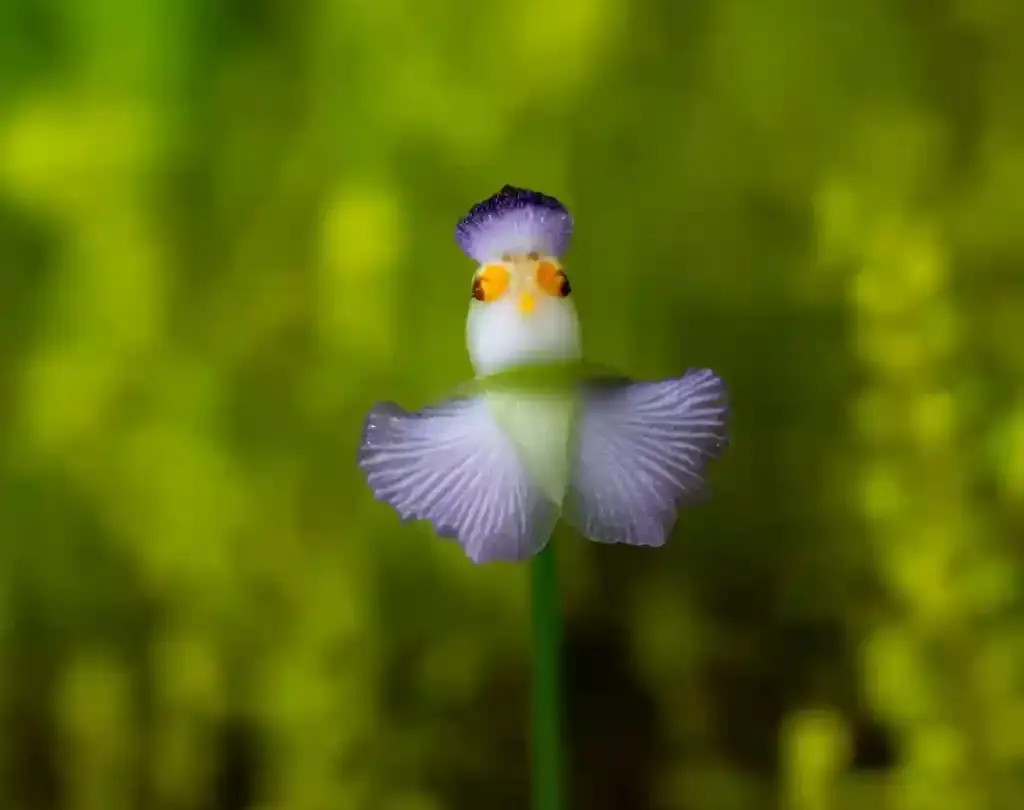
At first glance, Bladderworts (Utricularia spp.) might seem unassuming—but their delicate flowers and ingenious underwater traps make them both beautiful and brilliant. With over 200 species, bladderworts can be found in aquatic environments around the world, floating on the surface or growing in saturated soil.
The “pretty” part? Their blooms. Many species produce orchid-like flowers in shades of yellow, purple, or blue, standing tall above the water or mossy surface. These blooms are often mistaken for wildflowers, adding elegance to ponds, bog gardens, or terrariums.
Below the surface, however, things get interesting. Tiny bladders on the plant’s root-like structures act as vacuum traps, sucking in microscopic prey like water fleas the moment a trigger hair is touched.
Bladderworts grow well in boggy or aquatic conditions, need bright light, and appreciate soft, acidic water. They’re perfect for terrariums or natural ponds, and definitely belong on any list of pretty plants with unexpected superpowers.
11. Villose Pitcher Plant
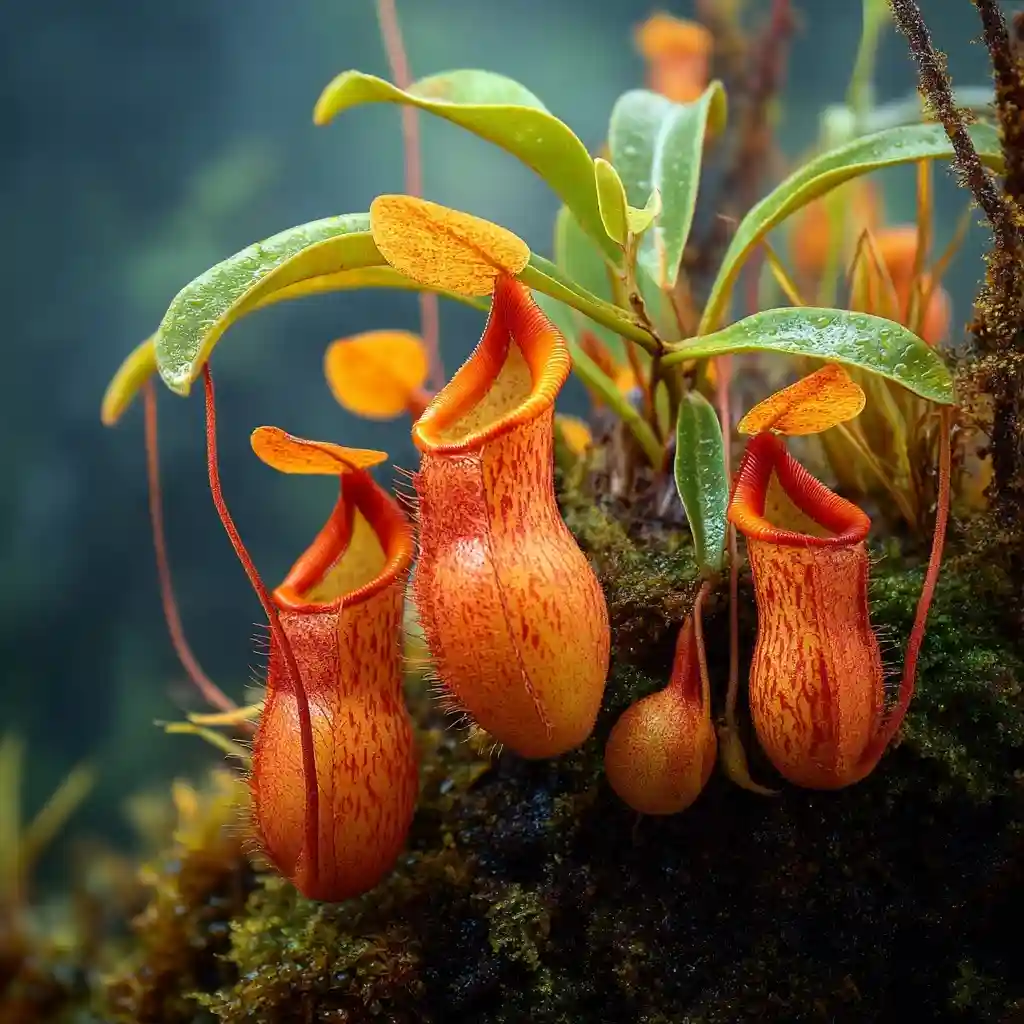
The Villose Pitcher Plant (Nepenthes villosa) brings together bold color and exotic form in one compact but dramatic package. Native to the high-altitude cloud forests of Malaysian Borneo, this plant features bright orange, hairy pitchers that contrast vividly with its deep green foliage.
The thick, fuzzy exterior isn’t just for show—the tiny hairs may help retain moisture in the plant’s native misty climate. The pitchers themselves are functional bug traps, filled with digestive fluid that breaks down prey for nutrients in the nutrient-poor mountain soil.
Despite its exotic beauty, this species is extremely challenging to grow, requiring cool temperatures, constant humidity, and precise light levels. It’s typically kept in high-elevation greenhouses by expert collectors, but its vivid appearance earns it a place on any list of truly pretty plants that defy expectations.
It’s not just a plant—it’s a living sculpture.
12. Kinabalu Pitcher Plant
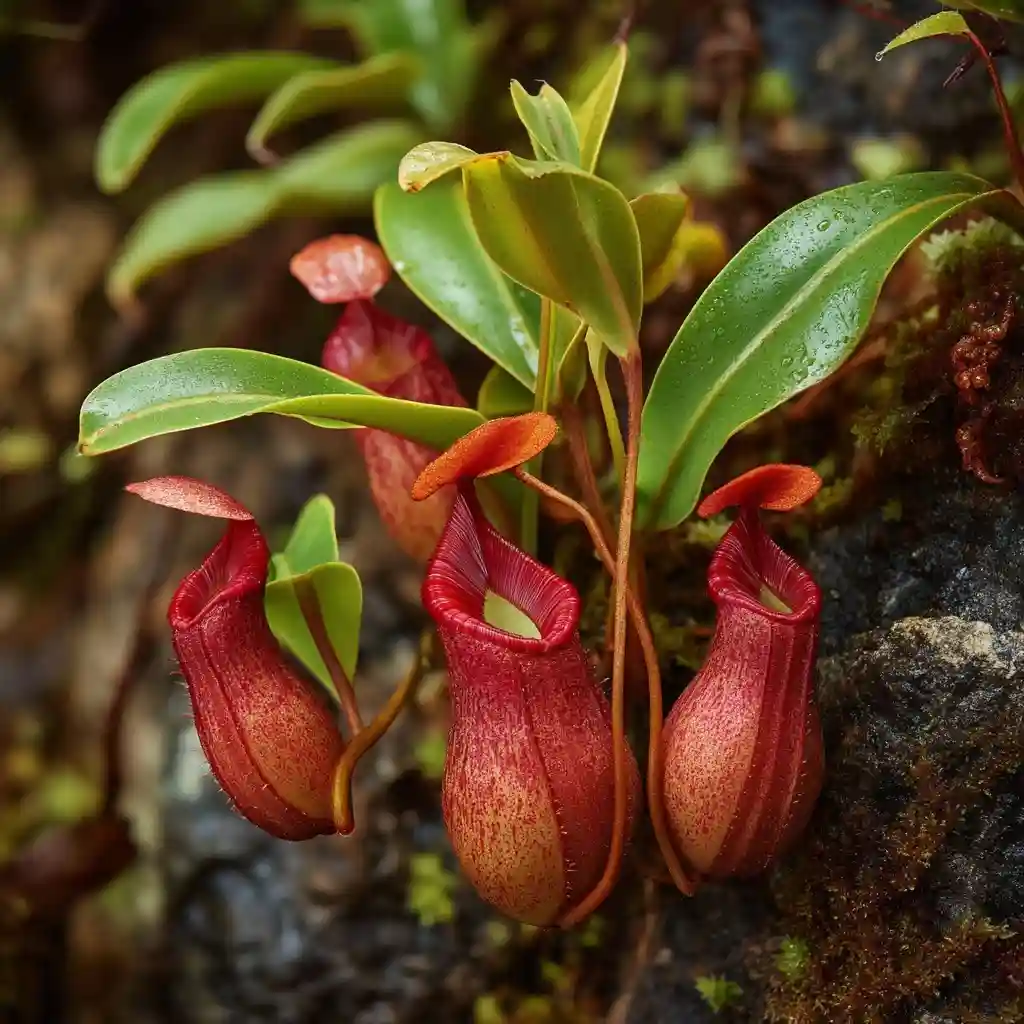
The Kinabalu Pitcher Plant (Nepenthes kinabaluensis) is a natural hybrid found only on Mount Kinabalu in Malaysian Borneo. This elusive species combines the traits of Nepenthes rajah and Nepenthes villosa, resulting in massive, vividly colored pitchers that look almost too beautiful to be real.
The pitchers—often in shades of deep red with speckled throats—can grow up to 14 inches long and are capable of trapping not just insects, but small frogs and other tiny vertebrates. The plant’s structure is regal and robust, with leathery leaves and a commanding presence that stands out even in the dense cloud forests where it grows.
Because of its rarity and specific environmental needs—cool temperatures, high humidity, and pure water—this plant is almost never found outside of conservation collections or specialist greenhouses. Still, it’s one of the most visually dramatic and scientifically fascinating pretty plants in the carnivorous world.
Owning one might be a dream, but admiring it is a privilege.
13. Veitch’s Pitcher Plant
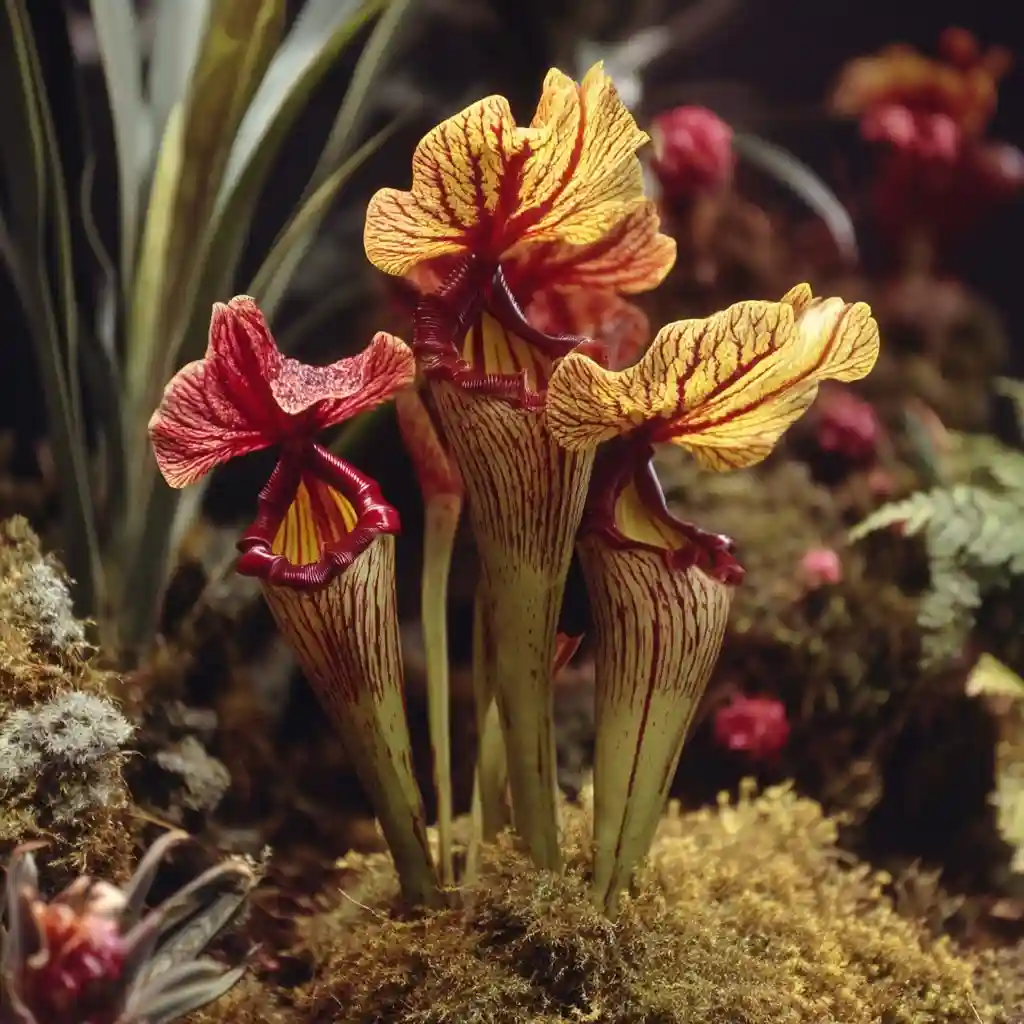
The Veitch’s Pitcher Plant (Nepenthes veitchii) is a true tropical showstopper. Native to the lowland and montane forests of Borneo, this species is best known for its boldly striped pitchers that often feature bands of orange, red, and yellow. Its pitcher opening flares outward like a decorative lip, making it one of the most ornamental Nepenthes species.
Beyond the vivid pitchers, the plant’s cascading growth habit and lush foliage add even more appeal. In the wild, it often grows as an epiphyte—clinging to tree trunks and branches with tendrils that suspend its pitchers like ornaments in a rainforest chandelier.
While breathtaking, it’s not for beginners. Veitch’s Pitcher Plant requires consistent humidity, bright filtered light, and warm temperatures to thrive—conditions usually found in a greenhouse or controlled terrarium.
If you’re building a collection of rare and pretty plants with striking character, N. veitchii is a bucket-list addition worth the effort.
14. Butterwort
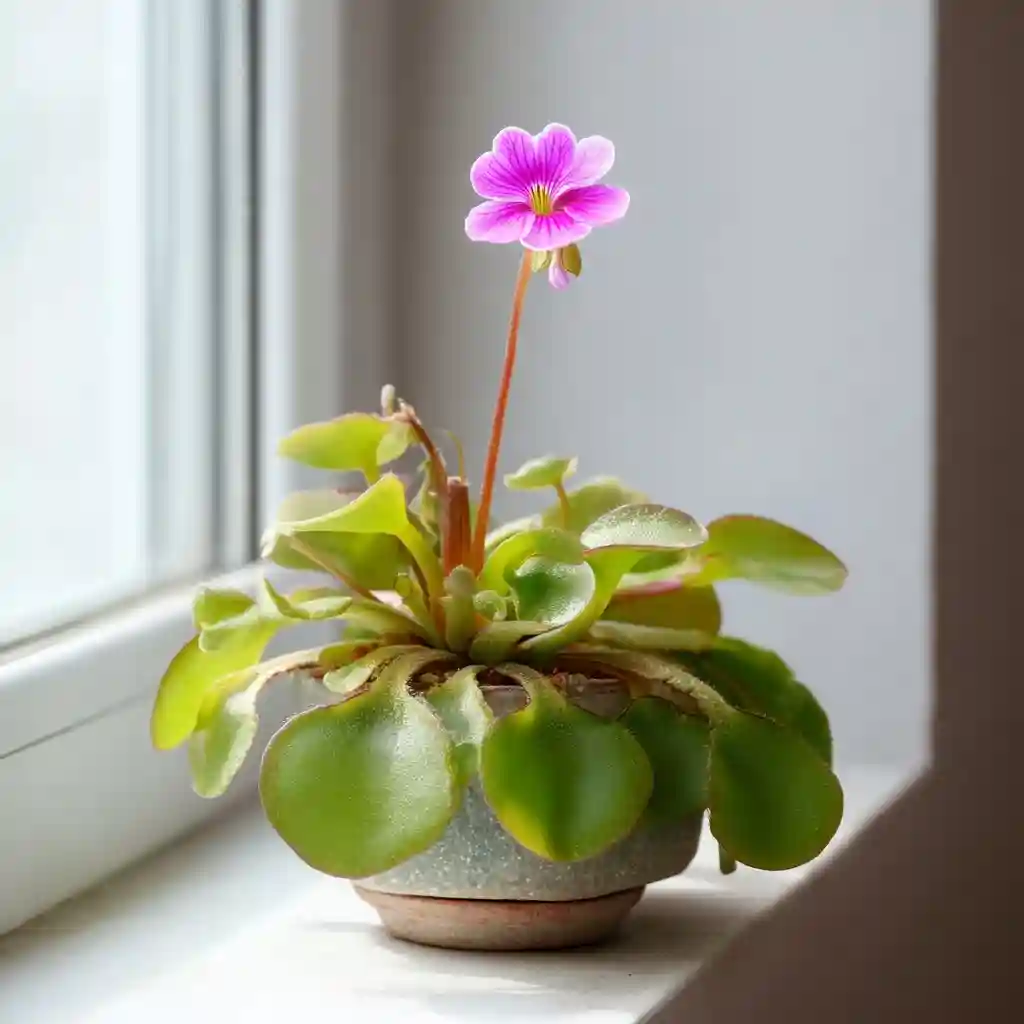
The Butterwort (Pinguicula spp.), often nicknamed “ping,” is a small but stunning carnivorous plant that pairs delicate beauty with insect-catching prowess. Its broad, flat leaves form rosettes that glisten with sticky mucilage, luring and digesting small pests like gnats and fruit flies.
What sets butterworts apart in the world of carnivorous plants is their flowering display. Many species produce dainty, orchid-like blooms in shades of purple, pink, white, or yellow, which rise on slender stalks above the sticky foliage. The contrast between the vibrant flowers and the glistening leaves makes them true ornamental gems.
Butterworts are surprisingly versatile and can be grown indoors, in terrariums, or even outdoors in mild climates. They prefer bright indirect light, moist conditions, and a gritty, well-draining soil mix, often similar to succulent blends.
If you’re after pretty plants that are both decorative and functional in keeping pesky insects at bay, butterworts are one of the easiest and loveliest options available.
FAQ
What are some plants that eat flies?
Several pretty plants excel at catching flies. The most famous is the Venus Flytrap, which snaps shut on its prey with lightning speed. Other fly-eaters include Sundews, which trap them in sticky hairs, and Butterworts, which use glue-like leaves to immobilize and digest small flying insects.
Do carnivorous plants help with mosquitoes?
Some species can help a bit—particularly Bladderworts, which trap aquatic mosquito larvae in their tiny underwater bladders. However, carnivorous plants aren’t a reliable mosquito control method for outdoor areas. Still, they can reduce small indoor pests like gnats and fruit flies when placed in the right environment.
What is the largest plant that will eat bugs?
The title for largest bug-eating plant goes to Nepenthes rajah, a giant tropical pitcher plant from Borneo (a close relative of the Kinabalu Pitcher Plant). Its massive pitchers can hold up to a gallon of water and trap everything from insects to small vertebrates like frogs or even rodents—though the latter is rare.
Conclusion
Carnivorous plants aren’t just fascinating—they’re also some of the most pretty plants you can add to your indoor or outdoor collection. From the elegant stripes of Veitch’s Pitcher Plant to the jewel-like sparkle of Sundews, these bug-hunters blend form and function in the most captivating ways.
Whether you’re a seasoned grower or a curious beginner, there’s a carnivorous plant to suit your space and style. Just remember: their beauty comes with unique care requirements, but the payoff is a living sculpture that keeps pests at bay and always sparks conversation.
🌿 Love gardening inspiration? Follow me on Pinterest for bold plant ideas, tips, and seasonal color!
More Posts
